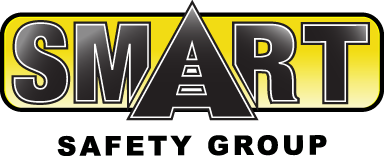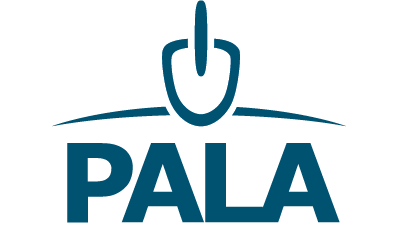Rubber tank lining is a critical process in many industries. Take chemical processing, mining, and water treatment for example, where tanks and other vessels are exposed to harsh chemicals and abrasive materials.
To avoid corrosion and extend the longevity of rubber linings and the vessels they protect, proper installation and maintenance are required. But these processes aren’t without challenges, which is why it’s important to find a rubber lining contractor you can trust to do the job right.
Top 4 Rubber Tank Lining Challenges (+ Solutions)
Below we’ll review the most common tank and vessel lining issues and how our experienced team at US RUBBER works to combat them.
1. Rubber Lining Adhesion Problems
The most common challenge in rubber tank lining installation is ensuring strong adhesion between the rubber lining and the substrate. Poor adhesion can lead to premature failure of the lining, resulting in costly repairs and even more costly operational downtime.
The most typical causes of rubber lining adhesion issues are:
- Contaminated substrate: Contaminants like oil, rust, and moisture can prevent the lining from bonding correctly to a surface.
- Application techniques: Inconsistent or incorrect application techniques can lead to weak spots, where the lining fails to adhere properly.
- Curing process: Uncontrolled or unfinished rubber curing can result in weak adhesion and lining failure.
Adhesion Solutions
To avoid adhesion problems and consequent rubber lining defects, our team:
- Utilizes advanced surface preparation techniques (abrasive blasting, chemical cleaning) to ensure that substrates are free from contaminants.
- Maintains up-to-date on the latest application methods
- Employs precise curing techniques to guarantee rubber integrity
2. Complex Tank Shapes
Industrial tanks and vessels come in various shapes and sizes. Complex geometrics, such as corners, edges, or irregular shapes, can make it difficult to achieve a uniform and effective lining due to:
- Incomplete coverage: Ensuring complete coverage in tanks with complex shapes can be difficult, leading to potential weak spots where the lining is thinner or absent.
- Weak seam integrity: Seams and joints in rubber linings can be vulnerable points that, without proper sealant techniques, lead to leaks and other failures.
How to Effectively Rubber Line Irregularly Shaped Vessels
At US RUBBER, we have experience lining tanks and vessels of all shapes and sizes. Our skilled technicians use specialized techniques and equipment to ensure complete coverage and seamless integration of the rubber lining. Before we consider the job complete, we take an additional measure to conduct rigorous inspections and ensure that all seams and joints are free of defects.
3. Rubber Lining Thickness Variability
Rubber lining thickness should be uniform across the entire tank or vessel. Variations in thickness can lead to weak spots that are more susceptible to wear. In most cases, thickness variations are due to:
- Application errors: Inconsistent application techniques can result in too-thick or too-thin areas in the lining.
- Material properties: Variations in the rubber material itself can of course lead to uneven thickness during application.
- Environmental factors: Temperature and humidity can affect the rubber curing process and lining application, leading to variations in lining thickness.
How to Ensure Uniform Rubber Lining Thickness
Above all else, we source only high-quality rubber with consistent properties to ensure uniform thickness in all projects. We also use state-of-the-art equipment and modern techniques to guide our application process. Finally, our technicians are trained to monitor and control environmental conditions to minimize their impact; with a Gulf Coast-focused service area, we know a thing or two about working in high temps and humidity!
4. Corrosion
Of course, the purpose of rubber lining is to prevent corrosion in tanks and vessels. But what about preventing corrosion in the rubber lining? Issues can arise from:
- Chemical incompatibilities: The rubber lining must be compatible with specific chemicals or materials stored in the vessel to provide effective corrosion resistance.
- General wear and tear: This is inevitable over time.
Corrosion Solutions
We work closely with our clients to select the appropriate lining material based on the specific chemicals and conditions to which the tank will be exposed.
Aside from that, the most impactful thing we do to prevent corrosion (or at least identify and fix it before it turns into a bigger issue) is to conduct regular inspections and maintenance. Our comprehensive inspection and maintenance services include:
- Scheduling proactive inspections to identify signs of wear, damage, or adhesion problems early on, per standards set by the American Society of Mechanical Engineers (see ASME Section VIII, Division 1).
- Making repairs to address issues promptly, prevent further damage, and ensure the continued protection of the tank or vessel.
- Keeping detailed records of all inspections, repairs, and maintenance activities to track the performance of the rubber lining over time.
Safeguard the Integrity of Your Rubber Lining Application
Rubber lining is a highly beneficial addition to your tanks and vessels — but only if it’s done thoughtfully and properly.
With our advanced techniques, high-quality materials, and skilled technicians, we can ensure your tanks and vessels are protected to perform optimally for years to come. If you’re experiencing any issues with your rubber tank lining or need expert maintenance services, don’t hesitate to reach out.




